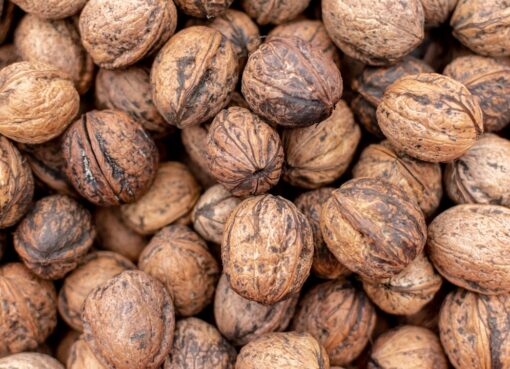Pink Mushroom: A Rare and Enchanting Fungi

The pink mushroom, scientifically known as Rhodotus palmatus, is a rare and enchanting fungi that captivates the imagination of those who are fortunate enough to encounter it. This unique mushroom is easily recognizable by its vibrant pink color, which sets it apart from the more common brown and white mushrooms found in forests and woodlands. The pink mushroom is a sight to behold, with its delicate gills and distinctive cap shape, making it a favorite among mushroom enthusiasts and nature lovers alike.
The pink mushroom is a member of the Basidiomycota phylum, which includes many of the familiar mushrooms and toadstools found in the wild. However, what makes the pink mushroom truly special is its rarity and elusive nature. It is not often encountered in the wild, and when it is found, it is a cause for celebration among those who appreciate the beauty and diversity of the natural world. The pink mushroom has a mystical quality that has inspired artists, writers, and storytellers for centuries, making it a symbol of enchantment and wonder in the world of fungi.
Key Takeaways
- The Pink Mushroom is a rare and enchanting fungi that has captured the fascination of many due to its unique characteristics and cultural significance.
- Its unique characteristics include its vibrant pink color, distinct shape, and ability to glow in the dark, making it a truly mesmerizing sight in the forest.
- The Pink Mushroom is typically found in damp, wooded areas with rich soil, and is distributed in specific regions around the world, making it a rare find for mushroom enthusiasts.
- In various cultures, the Pink Mushroom holds symbolic significance, often associated with love, beauty, and mysticism, and has been featured in folklore and literature for centuries.
- Conservation efforts are underway to protect the Pink Mushroom from threats such as habitat destruction, climate change, and over-harvesting, in order to preserve its beauty for future generations to appreciate and study.
The Unique Characteristics of the Pink Mushroom
The pink mushroom is known for its distinct appearance, with a cap that ranges in color from pale pink to deep magenta, and gills that are a lighter shade of pink. The cap of the pink mushroom is often described as being fan-shaped or kidney-shaped, with a velvety texture that adds to its allure. The gills of the pink mushroom are closely spaced and run down the length of the stem, giving it a delicate and intricate appearance that is unlike any other mushroom in the forest.
In addition to its striking appearance, the pink mushroom also has a unique odor that has been compared to the scent of fresh watermelon rind or cucumber. This unusual fragrance adds to the mystique of the pink mushroom, making it a sensory experience for those lucky enough to encounter it in the wild. The pink mushroom is also known for its edible qualities, with a mild and pleasant flavor that makes it a sought-after delicacy for foragers and chefs alike. However, due to its rarity, it is important to exercise caution and respect when harvesting the pink mushroom, as conservation efforts are crucial to preserving this enchanting fungi for future generations to enjoy.
The Habitat and Distribution of the Pink Mushroom
The pink mushroom is typically found growing on decaying hardwood trees, particularly oak and beech trees, in temperate forests and woodlands. It prefers moist and shady environments, often appearing in late summer or early autumn after periods of rain. The pink mushroom is most commonly found in North America and Europe, although it has been reported in other parts of the world as well. Its limited distribution adds to its allure, as those who seek out the pink mushroom must venture into specific habitats and conditions to have a chance of encountering this rare and enchanting fungi.
The pink mushroom’s preference for specific tree species and environmental conditions makes it a valuable indicator species for the health of forest ecosystems. Its presence can signal the presence of healthy, mature forests with diverse plant and animal life, making it an important species for conservation efforts. As such, efforts to protect and preserve the habitats where the pink mushroom is found are crucial for ensuring its continued existence in the wild. This includes promoting sustainable forestry practices, protecting old-growth forests, and raising awareness about the importance of biodiversity in forest ecosystems.
The Cultural and Symbolic Significance of the Pink Mushroom
| Aspect | Details |
|---|---|
| Color | Pink |
| Symbolism | Associated with love, femininity, and compassion |
| Cultural significance | Used in art, literature, and popular culture to convey various meanings |
| Mythology | Linked to stories and folklore in different cultures |
| Ecological role | Part of the ecosystem, providing food and habitat for other organisms |
The pink mushroom has long been revered for its cultural and symbolic significance in various societies around the world. In some cultures, the pink mushroom is seen as a symbol of good luck and prosperity, with its vibrant color representing abundance and fertility. In others, it is associated with love and romance, with its delicate appearance evoking feelings of beauty and enchantment. The pink mushroom has also been used in traditional medicine and folklore for its purported healing properties, adding to its mystique and allure.
In addition to its cultural significance, the pink mushroom has also been celebrated in art, literature, and popular culture. Its otherworldly appearance has inspired artists to capture its beauty on canvas, while writers have woven tales of mystery and magic around its elusive nature. In popular culture, the pink mushroom has become a symbol of whimsy and fantasy, appearing in fairy tales and fantasy novels as a magical ingredient or enchanted object. Its unique qualities have made it a beloved symbol of nature’s wonder and mystery, captivating the imagination of people around the world.
Conservation Efforts and Threats to the Pink Mushroom
Despite its cultural significance and enchanting beauty, the pink mushroom faces numerous threats to its continued existence in the wild. Habitat loss due to deforestation and urban development poses a significant risk to the pink mushroom’s preferred habitats, while climate change and pollution can also impact its ability to thrive in natural environments. Additionally, overharvesting by foragers and collectors can further deplete populations of the pink mushroom, putting it at risk of extinction in some areas.
Conservation efforts are crucial for protecting the pink mushroom and ensuring its survival for future generations to enjoy. This includes establishing protected areas where the pink mushroom can thrive undisturbed, as well as promoting sustainable harvesting practices for those who seek out this rare fungi for culinary or medicinal purposes. Raising awareness about the importance of biodiversity and forest conservation is also essential for preserving the habitats where the pink mushroom is found, as well as advocating for policies that support sustainable forestry practices and habitat protection.
The Pink Mushroom in Folklore and Literature

The pink mushroom has long been a source of fascination in folklore and literature, where it has been celebrated for its mystical qualities and enchanting beauty. In some cultures, the pink mushroom is believed to possess magical properties, with stories of fairies and woodland spirits being drawn to its vibrant color and delicate fragrance. It has been depicted as a symbol of good fortune and prosperity in many folk tales, with those who encounter it being blessed with luck and abundance.
In literature, the pink mushroom has been used as a symbol of mystery and wonder, often appearing in stories as a rare and elusive object of desire. Its otherworldly appearance has inspired writers to create tales of adventure and enchantment, where characters seek out the pink mushroom for its rumored powers or as a quest to unlock its secrets. Its rarity and beauty have made it a beloved symbol of nature’s magic and allure, captivating readers with its ethereal qualities.
Studying and Appreciating the Pink Mushroom
Studying and appreciating the pink mushroom is an important endeavor for those who are passionate about fungi and biodiversity. Scientists and researchers have much to learn from studying the pink mushroom’s unique characteristics and ecological role in forest ecosystems. By understanding its habitat preferences, life cycle, and interactions with other organisms, we can gain valuable insights into how to protect and preserve this rare fungi for future generations.
For those who simply appreciate the beauty of nature, taking the time to seek out and admire the pink mushroom in its natural habitat can be a rewarding experience. Its vibrant color and delicate appearance make it a sight to behold, while its unique fragrance adds an extra dimension to the sensory experience of encountering this rare fungi. By respecting its natural habitats and exercising caution when harvesting or collecting the pink mushroom, we can ensure that it continues to thrive in the wild for years to come.
In conclusion, the pink mushroom is a rare and enchanting fungi that captivates all who encounter it with its vibrant color, delicate appearance, and unique fragrance. Its cultural significance, conservation needs, folklore presence, literature representation make it an important species worthy of study and appreciation. By understanding its unique characteristics, protecting its habitats, celebrating its cultural significance, preserving it in folklore and literature we can ensure that this mystical fungi continues to inspire wonder and awe for generations to come.
If you’re interested in learning more about the fascinating world of mushrooms, you should check out this article on the pink mushroom from Sky High Renders. This article provides in-depth information about the pink mushroom, including its unique characteristics, habitat, and potential uses. It’s a great resource for anyone looking to expand their knowledge of mushrooms and their diverse varieties.
FAQs
What is a pink mushroom?
A pink mushroom is a type of fungus that belongs to the Basidiomycota phylum. It is characterized by its pink-colored cap and gills.
Where can pink mushrooms be found?
Pink mushrooms can be found in various habitats, including forests, grasslands, and woodlands. They often grow on the ground, on decaying wood, or on tree stumps.
Are pink mushrooms edible?
Some species of pink mushrooms are edible, while others are toxic. It is important to accurately identify the species before consuming any wild mushroom.
What are the ecological roles of pink mushrooms?
Pink mushrooms play important ecological roles as decomposers, breaking down organic matter and recycling nutrients in the environment. They also form symbiotic relationships with plants, helping them absorb water and nutrients from the soil.
Can pink mushrooms be used for medicinal purposes?
Some species of pink mushrooms have been studied for their potential medicinal properties, including anti-inflammatory and antioxidant effects. However, more research is needed to fully understand their medicinal potential.
Are pink mushrooms rare?
The abundance of pink mushrooms varies depending on the species and the specific habitat. Some species may be relatively common, while others are more rare and elusive.
Leave a Reply
You must be logged in to post a comment.



Leave a Comment